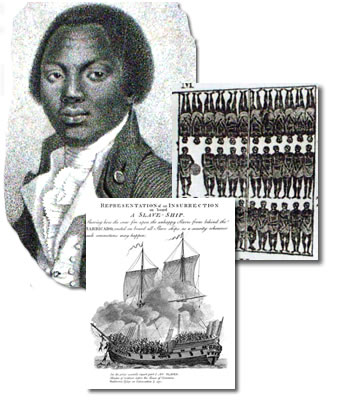
Did the ‘Middle Passage’ deserve its awful reputation? Montage of images showing engraving of Olaudah Equiano, close-up of how slaves could be stowed aboard a slave ship and a representation of an insurrection aboard the slave ship Barricado. Of all the horrors associated with the African slave trade it was probably the ‘Middle Passage’ that caused most consternation amongst eighteenth and nineteenth century reformers. During a parliamentary debate on slavery in 1791, William Pitt, who was then the Prime Minister, said ‘the circumstances of the Middle Passage alone, would in his mind, be reason enough for the Abolition.’ The ‘Middle Passage’ referred to the long transatlantic crossing taking the enslaved Africans away from their homeland to work on the plantations of the West Indies and Americas. Since it was the second of the three legs of the triangular trade it became known as the ‘Middle Passage’. The Abolitionists produced many reports detailing the awful conditions of the ‘Middle Passage’. They argued that slaves were crowded aboard the ships, where they were forced to live in extremely cramped conditions. They were often chained together, giving them no freedom of movement. Disease was rife and many slaves fell ill and died. Not surprisingly, the reports were disputed by the supporters of slavery. Did the ‘Middle Passage’ deserve its awful reputation? It is your job to find out. Use the sources and information to help you in your investigation. Go to Sources |